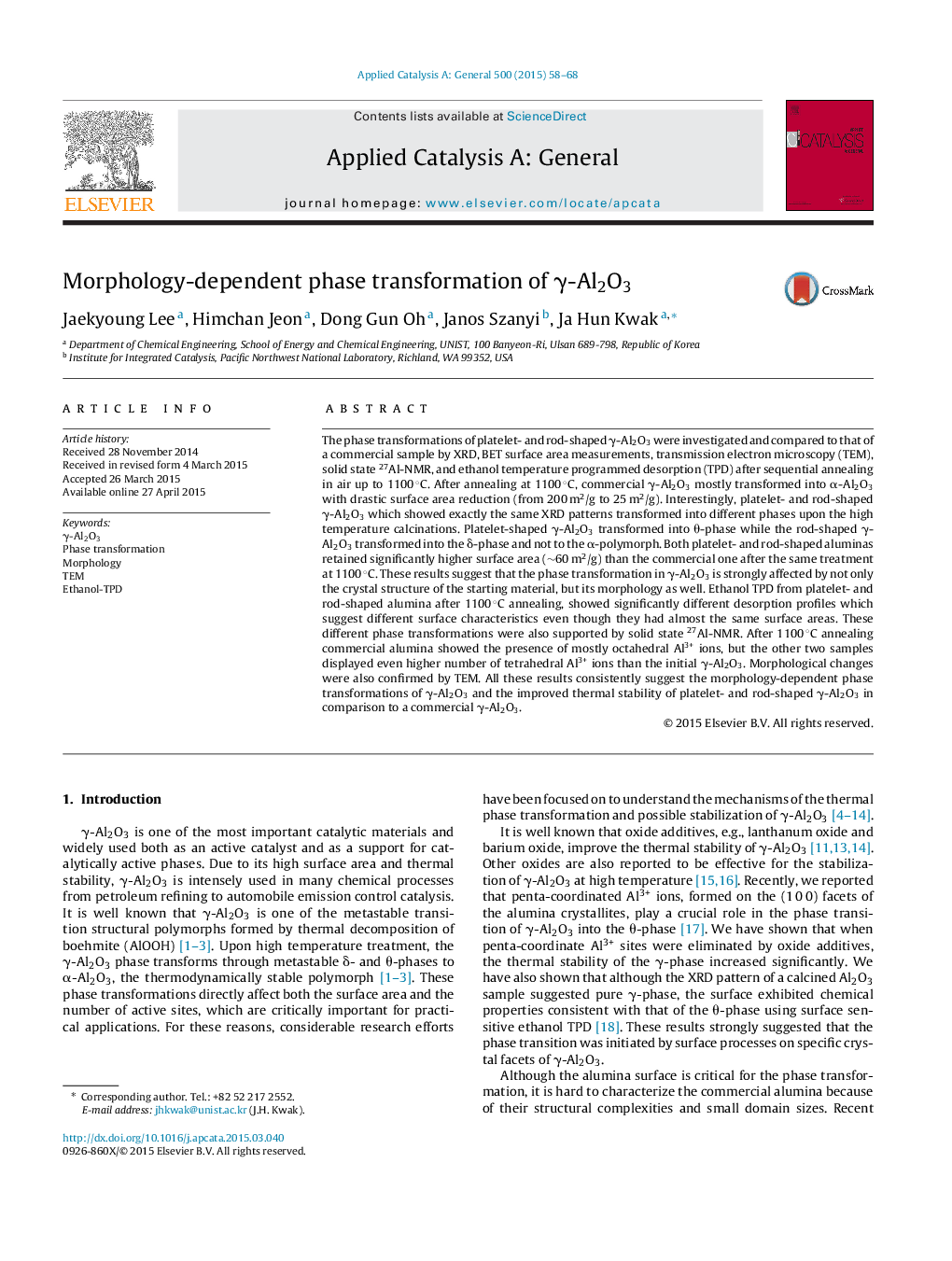| Article ID | Journal | Published Year | Pages | File Type |
|---|---|---|---|---|
| 39146 | Applied Catalysis A: General | 2015 | 11 Pages |
•Alumina phase transformations were affected by crystal structure and morphology.•Ethanol TPD showed different surface characteristics even they have same surface areas.•Platelet- and rod-shape γ-Al2O3 showed significantly improved thermal stability.
The phase transformations of platelet- and rod-shaped γ-Al2O3 were investigated and compared to that of a commercial sample by XRD, BET surface area measurements, transmission electron microscopy (TEM), solid state 27Al-NMR, and ethanol temperature programmed desorption (TPD) after sequential annealing in air up to 1100 °C. After annealing at 1100 °C, commercial γ-Al2O3 mostly transformed into α-Al2O3 with drastic surface area reduction (from 200 m2/g to 25 m2/g). Interestingly, platelet- and rod-shaped γ-Al2O3 which showed exactly the same XRD patterns transformed into different phases upon the high temperature calcinations. Platelet-shaped γ-Al2O3 transformed into θ-phase while the rod-shaped γ-Al2O3 transformed into the δ-phase and not to the α-polymorph. Both platelet- and rod-shaped aluminas retained significantly higher surface area (∼60 m2/g) than the commercial one after the same treatment at 1100 °C. These results suggest that the phase transformation in γ-Al2O3 is strongly affected by not only the crystal structure of the starting material, but its morphology as well. Ethanol TPD from platelet- and rod-shaped alumina after 1100 °C annealing, showed significantly different desorption profiles which suggest different surface characteristics even though they had almost the same surface areas. These different phase transformations were also supported by solid state 27Al-NMR. After 1100 °C annealing commercial alumina showed the presence of mostly octahedral Al3+ ions, but the other two samples displayed even higher number of tetrahedral Al3+ ions than the initial γ-Al2O3. Morphological changes were also confirmed by TEM. All these results consistently suggest the morphology-dependent phase transformations of γ-Al2O3 and the improved thermal stability of platelet- and rod-shaped γ-Al2O3 in comparison to a commercial γ-Al2O3.
Graphical abstractFigure optionsDownload full-size imageDownload high-quality image (171 K)Download as PowerPoint slide
